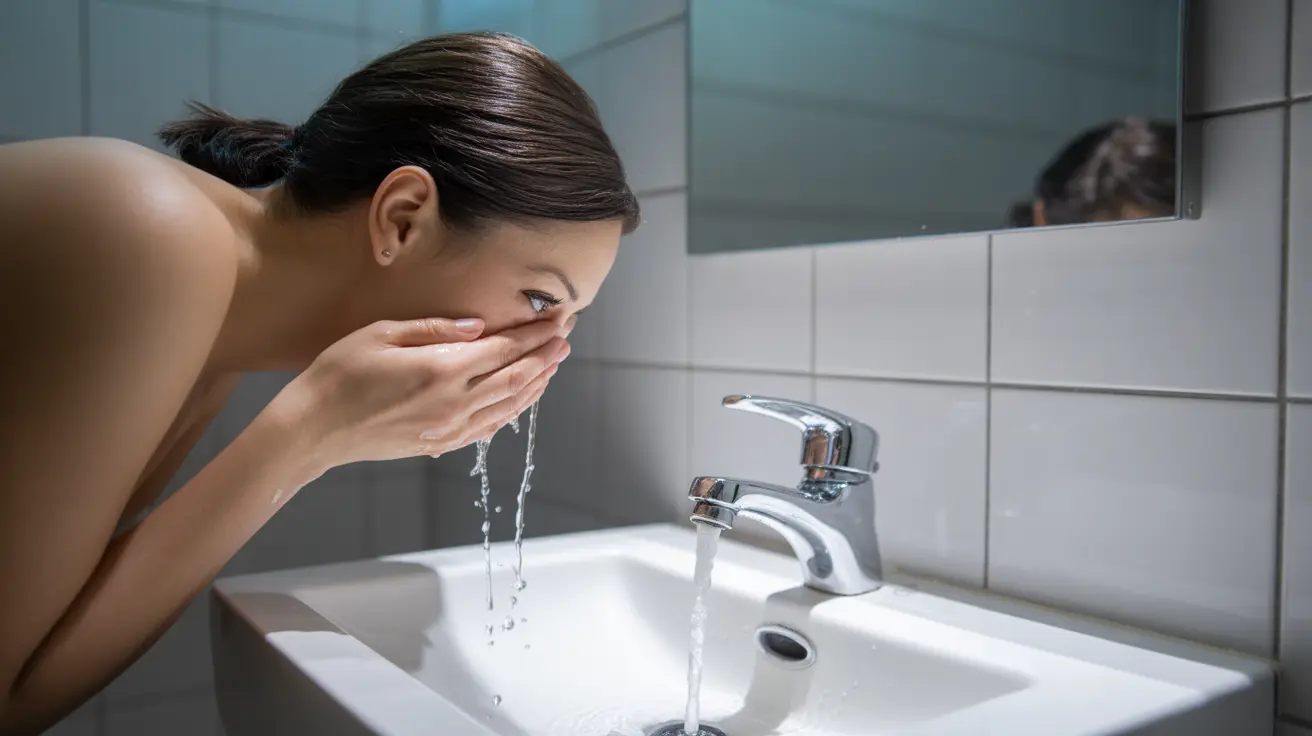Getting soap in your eye can be a painful and alarming experience. The immediate burning sensation and discomfort can cause panic, but knowing the proper steps to handle this common accident can help minimize potential damage and provide quick relief. This guide will walk you through the safest methods to remove soap from your eyes and prevent complications.
Immediate Steps for Soap Eye Exposure
When soap gets in your eye, your first response is crucial. The most important action is to flush your eye thoroughly with clean, room-temperature water. Tilt your head sideways with the affected eye facing downward to prevent the contaminated water from running into your other eye.
Using the Right Water Temperature and Technique
Use lukewarm or room temperature water, as extremely cold or hot water can cause additional discomfort. Keep your eye open while rinsing, even though it may be uncomfortable. You can hold your eyelids open with your fingers to ensure thorough irrigation.
Proper Eye Flushing Methods
Using an Eyecup
If available, an eyecup can be particularly effective for flushing out soap. Fill it with clean water and press it firmly around your eye socket. Tilt your head back, open your eye, and then forward to allow the water to wash through thoroughly.
Using a Shower or Faucet
You can also use a gentle stream of water from a shower head or faucet. Position your head so the water flows from the inner corner of your eye (near your nose) toward the outer corner. This helps prevent soap-contaminated water from flowing across your entire eye.
What Not to Do
Several actions can worsen the situation when soap gets in your eye:
- Don't rub your eyes
- Avoid using soap to rinse your eyes
- Don't use hot or very cold water
- Don't ignore persistent symptoms
- Don't continue wearing contact lenses if you wear them
When to Seek Medical Attention
While most soap exposure cases can be handled at home, certain situations require professional medical attention:
- Persistent pain or burning after thorough rinsing
- Blurred or changed vision
- Visible eye damage or scratches
- Severe redness or swelling
- Continued discharge from the eye
Frequently Asked Questions
How do I safely get soap out of my eye to stop the stinging?
Immediately flush your eye with clean, room-temperature water for at least 15 minutes. Tilt your head sideways with the affected eye facing down, and keep your eye open while rinsing to ensure thorough irrigation.
Why should I avoid rubbing my eyes after getting soap in them?
Rubbing your eyes can cause the soap to spread further across the eye surface and potentially scratch your cornea. It may also push the irritant deeper into the eye tissue, increasing the risk of damage.
How long should I flush my eye with water after soap exposure?
Continue flushing your eye for at least 15-20 minutes. If irritation persists after this initial rinse, you may need to continue flushing for an additional 15 minutes or seek medical attention.
What should I do if I still have eye pain or blurred vision after rinsing out soap?
If symptoms persist after thorough rinsing, seek immediate medical attention. Continuing discomfort or vision changes could indicate corneal damage or chemical injury requiring professional treatment.
Can wearing contact lenses make soap in the eye more dangerous, and how should I handle them?
Yes, contact lenses can trap soap against your eye and increase the risk of injury. Remove contact lenses immediately if safe to do so. If they're stuck or painful to remove, flush your eye with water first, then carefully remove the lenses. Dispose of the contacts and use a fresh pair once your eye has fully recovered.




